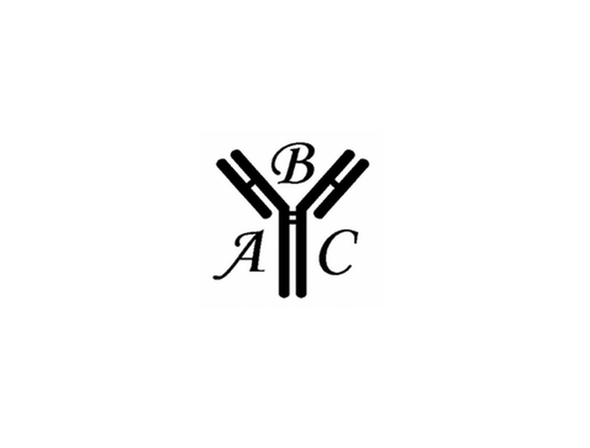HRP-conjugated Goat Anti-Nitrotyrosine | ABMC-H13
- SKU:
- ABMC-H13
- Availability:
- Usually shipped in 5 working days
Description
HRP-conjugated Goat Anti-Nitrotyrosine | ABMC-H13
| Host Species: | Goat |
| Concentration: | 1 mg/ml (OD 1.35 / 280 nm) |
| Antigen: | NY-KLH |
| Purification: | Affinity purified |
| Buffer: | 50 mM PBS, 0.1 M NaCl, and 0.01% Thiomersal, pH 7.4. |
| Specificity |
Specifically binds to nitratd proteins. Dilution for immunoblot and ELISA range: 1,000 to 8,000. |
| Use: | The antibody can be used for detection of nitrotyrosine in plasma, lipoproteins and other nitrated proteins, immunoassays, immunoblots, enzyme conjugation, or biotinylation. |
| Storage: | -20°C for long-term storage, 4°C for short- term storage. Aliquot to avoid repeated freezing and thawing. |
| Form: | Freeze dried powder |
| Stabilizer: | 10 mg / ml Bovine Serum Albumin. |
|
Reconstitution and Storage: |
Freeze-dried product should be stored refrigerated until opened. After opening, restore to suggested ml volume with distilled water. If it is not completely clear after standing for 1-2 hours at room temperature, centrifuge the product. It is stable for several weeks at 4°C as an undiluted liquid. Do not use for more than one day after dilution. For extended storage after reconstitution, we suggest aliquot to avoid repeated freezing and thawing; or the addition of an equal volume of glycerol to make a final glycerol concentration of 50%, followed by storage at -20°C. The concentration of protein and buffer salts will decrease to one-half of the original after the addition of glycerol. |
*These products are for research or manufacturing use only, not for use in human therapeutic or diagnostic applications.
IMPORTANCE
Nitrotyrosine originates as tyrosine in both a free and protein-bound form which plays a key role in the process of oxidation as seen in atherosclerosis and other inflammatory conditions including active lupus, influenza, pancreatitis, ulcerative colitis, and Crohn’s disease.
The protein-bound form that is involved in atherosclerosis is attached to LDL. This molecule is then nitrated to form the biologically active nitrotyrosine. The nitrate moiety is donated by the reactive nitrating intermediate peroxynitrite (ONOO-) (Graham et al., 1993). Peroxynitrite in turn is formed from MPO-dependent oxidation of nitric oxide (NO). This MPO-mediated oxidation process occurs in a highly efficient manner in human serum (Pennathur, 2004). Once modified, the nitrated form of LDL is then collected and consumed by macrophages via phagocytosis. While LDL− may be viewed as a circulating, atherogenic form of LDL in vivo, study has shown that tyrosine nitration and lipid peroxide together are responsible for the unfolding of α-helices inherent in LDL- formation. Oxidatively- modified low-density lipoprotein (LDL) is involved in the initiation and progression of atherosclerosis. (Hamilton et al., 2008)






